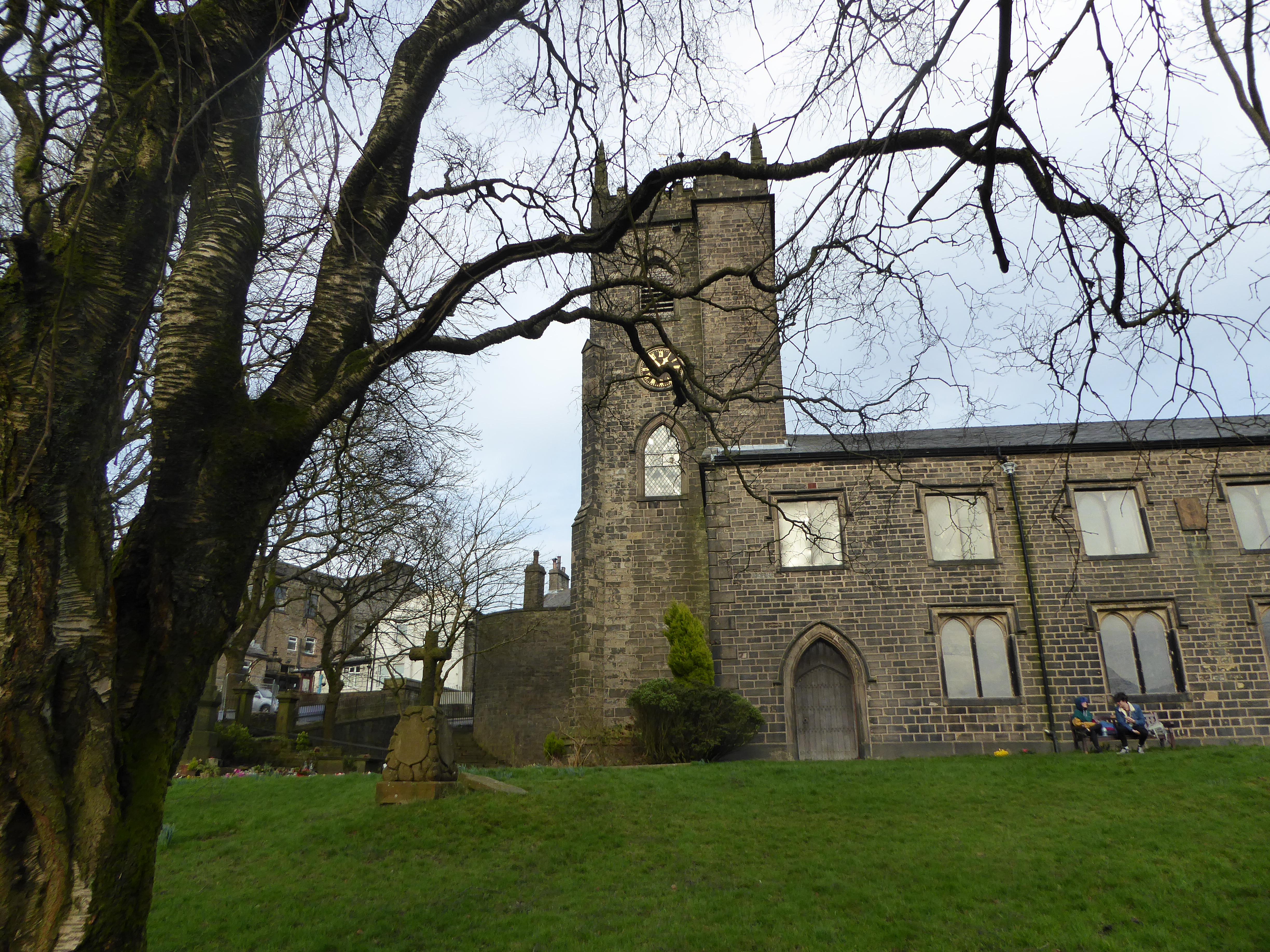My overseas foray into family history research, traveling on the edges of the virus outbreak, with my face mask and hand sanitizer.

Once I arrived in wet and windy Lancashire and traveled up and down the narrow river valleys with their grey stone walls, grey stone houses and often dark gloomy valley floors it was easy to see where dour temperaments came from. It was also easy to trace the movements of the various branches of my family tree as they moved from tiny villages into mill towns and beyond. I was lucky enough to chance upon St Nicholas’ Church in Newchurch, Lancashire when it was open, and gazed from the top of the hill to survey sights my many times great grandparents had also seen. The church was established in 1511. Those Lancastrians would not have been wearing a man-made fibre coat designed for Canadian winters, nor the latest in hiking boots, so while I was very cold, I can only try and imagine what it must have been like living back then in winter.
I tried to replicate my ancestors’ ferry journey between Liverpool and Belfast but the weather was too rough and the ferry was cancelled. I left Liverpool in sleet and arrived in Northern Ireland to snow!
I had enrolled in a family history workshop run by the Ulster Historical Foundation and conducted at PRONI (Public Record Office of Northern Ireland). Along with British, and Canadian participants, Irish history and Irish genealogy unfolded before me. It was fascinating, it was hard work, it was revelatory and it was fun.
Sarah Halliday, my husband’s ancestor, who arrived in Australia through the Earl Grey Scheme, was discovered in the Antrim Workhouse Registers. with her mother, two sisters and a brother. I read the committee minutes that recorded the clothing purchased for her so she could catch the train to Dublin, and then the ferry to Portsmouth, to get on the ship sending her and her sister Nancy to Melbourne. She was listed in the ship’s manifest as being 15 years old, but the workhouse records from 4 years earlier put her at 9 years old. She was probably 13 and heading to a new life far, far away.
I searched for my school teacher GG Grandfather George Browne. I had to go to Dublin to search in the National Archives of Ireland to find the pay books for the National School Teachers and there, in the great mouldy ledgers, I found George and his wife Eliza teaching in 1847 at Charlemont Place, Armagh. It was an eyeopener, my GG grandmother was a school teacher at the female school while my GGrandmother was a small child (possibly 5 years old). I could go on and on. I didn’t find everything I hoped for, but I found plenty.
My father, David, was the second youngest of 7, his father, Hamilton, was the youngest by a long way of six. My GGrandfather Alexander died when he was 50 years old (Hamilton was 7 years old). My father only ever knew Alexander’s name and the name and occupation of James, Alexander’s father. Nothing more. I found Alexander was the eldest of 7 children. I found my GGGrandmother Rachel Brown.
I knew I didn’t understand nearly enough about Irish history to make any assumptions about my Father’s ancestors, going to the workshop opened my eyes to a whole new world. I can heartily recommend such a journey to anyone, you will be amazed at what you learn. The trip also reinforced how well off we are in Australia with our BDM records and with Trove, and what a shame our censuses were not made public for family historians. While there is plenty of information to be found online, the two national archives I visited have plenty that is not available except by going there. Visiting Newry, Northern Ireland to see where several generations of Livingstons lived and worked, where my 20 year old GGrandfather left, never to return, adds colour and poignancy to a tale I may never properly know, but I will keep trying.